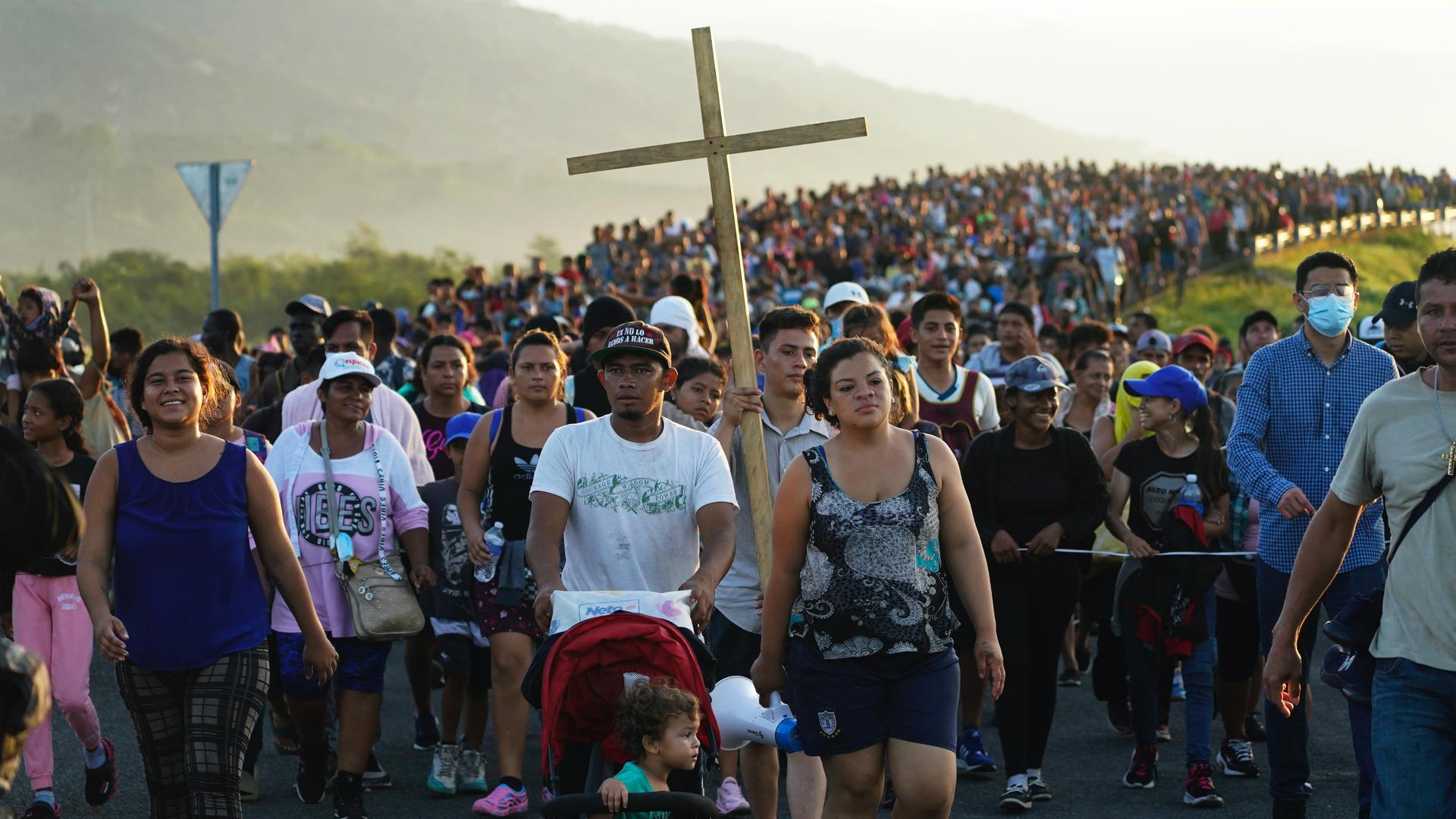In early October, activist Irineo Mujica announced via Twitter plans for a migrant caravan taking off from Tapachula — the southern Mexican city right by the Guatemalan border.
“We’re leaving in 20 days,” he said in Spanish. “They [Mexico’s National Guard] can’t stop us, and they know it.”
Related: The US farmworker shortage spurs farmers to lobby for immigration reform
Mujica, director of the transborder organization Pueblo Sin Fronteras in Mexico, is a US citizen who often travels with migrants to the US border.
This past weekend, he set out with a group of about 3,000 migrants — including families — from Tapachula toward Mexico City. Some of them have been stranded in Tapachula for months, blocked by Mexican officials from going farther north even though many have already applied for asylum. Many of those migrants say they hope to expedite their asylum petitions once in Mexico City, while others want to keep going and reach the US.
Both options are complicated, said Charlene D’Cruz, an immigration lawyer based in Brownsville, Texas, who has traveled with migrant caravans in the past. The asylum system in Mexico isn’t prepared to receive migrants, she said. On top of that, while people wait, they face dangers — like cartels that kidnap and extort them.
“Mexico isn’t safe, we know that. But at least they’re trying not to be deported to their home countries. So, Mexico is the next best thing for them.”
“Mexico isn’t safe, we know that. But at least they’re trying not to be deported to their home countries. So, Mexico is the next best thing for them,” D’Cruz said.
Julio Rank Wright, regional deputy director for Latin America with the International Rescue Committee, a humanitarian group that’s working on migrant safety in Mexico, estimates a tenfold increase in people seeking asylum in Mexico over the last five years. The caravan is the result of growing desperation, he said.
“It’s the result of a collapsed, underfunded and understaffed Mexican asylum system that needs attention,” he said.
Wright and other immigration experts are noticing another shift. Even though the Biden administration has focused its efforts to end mass migration from Central America — especially from Guatemala and Honduras, in the last few months, more people are coming from countries outside of Central America. Migrants from Ecuador, Venezuela and Haiti are growing in numbers.
“The truth of the matter is that there’s a new migration corridor, if you will, that extends all the way from Venezuela, sometimes Haiti, Cuba and other countries through Central America, and then, through Mexico.”
“The truth of the matter is that there’s a new migration corridor, if you will, that extends all the way from Venezuela, sometimes Haiti, Cuba and other countries through Central America, and then, through Mexico,” Wright said.
Related: Biden administration takes step to ‘bulletproof’ DACA
The Biden administration and other governments need to expand their focus when it comes to addressing mass migration, said William Murillo. He’s the executive director of the legal support group 1-800 Migrante based in New York, an organization focused on helping Ecuadorian migrants with their legal cases as they travel through Mexico to reach the US southern border.
More people are leaving Ecuador — especially the countryside — because the rates of poverty and crime are increasing there, he said. In transit, Ecuadorians are also facing some of the same crimes along the migrant routes that others face, Murillo said, like getting kidnapped and often disappearing.
“We have more than 12 years [of] publishing cases of missing [Ecuadorian] migrants,” he said.
In the last three years, those numbers of missing migrants have also increased, Murillo said. And he said he thinks it could get worse.
Related: Farmworkers who face extreme heat fear retaliation or deportation if they complain, says nurse
Murillo said these dangers need to be part of the conversation about policy solutions to mass migration. But something critical is missing from these talks, he said — they are often exclusive to government officials, without migrants themselves at the table.
“They [government officials] want to talk about migrants at the negotiation table, but there are none there,” Murillo said. “Then, how else can they have an accurate picture of what migrants are actually facing?”
